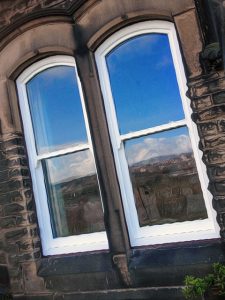 When it comes to getting replacement windows for your home, stained glass windows aren’t exactly the first choice for many. Certainly, the colours are quite nice and they could come with any number of patterns, but you probably wouldn’t want your home to be bathed in semi-darkness. Stained glass is, however, still a fascinating process, and differs from traditional windows in many ways.
When it comes to getting replacement windows for your home, stained glass windows aren’t exactly the first choice for many. Certainly, the colours are quite nice and they could come with any number of patterns, but you probably wouldn’t want your home to be bathed in semi-darkness. Stained glass is, however, still a fascinating process, and differs from traditional windows in many ways.
Coloured glass in its most basic form has existed for millennia, with the ancient Greeks and Romans employing such glass in small objects. Given the prominence of the church in the early AD centuries, it isn’t surprising that the opulence that stained glass brought was applied to the church buildings. This also served a practical use, in that illiterate citizens were able to view Bible stories as opposed to reading them.
The practice of images within a church became known as the ‘poor man’s Bible’, as it promoted equality amongst the uneducated. Chartres in France was known as the primary manufacturer of stained glass, which by the renaissance was a prominent art form.
Ordinary glass also has its uses, despite not being quite as ‘pretty’ as its counterpart. The most prominent and well-known form of glass is called ‘soda-lime glass’, and this is type seen in ordinary windows and other common glass items. It is a versatile form of glass, able to be recycled and worked with relatively easily. It is so named for its use of sodium carbonate (soda) and lime in its construction.
So what makes stained glass so different? The process is much the same, except metallic oxide powders or other malleable types of metal are added during the smelting process. Various types of metal produce different colours, and this also serves the make the glass only translucent.
Stained glass in your house would be pretty, and can be used for isolated windows for effect, but it is not efficient at letting in light, as the oxide traps the light particles. Therefore, we rely on soda-lime glass to let light into our houses and keep out the cold.
For example, window repair in Melbourne would be done with soda-lime glass in a form known as ‘flat-glass’, as opposed to container glass used for holding objects (such as jars). While stained glass is great for aesthetic effect, the traditional soda-lime is the more functional of the pair.